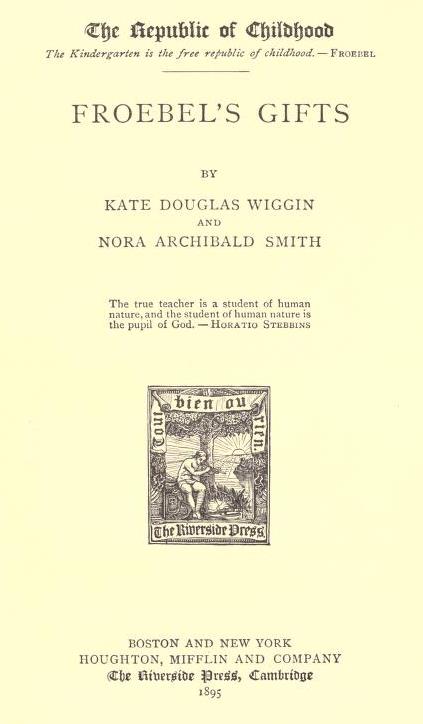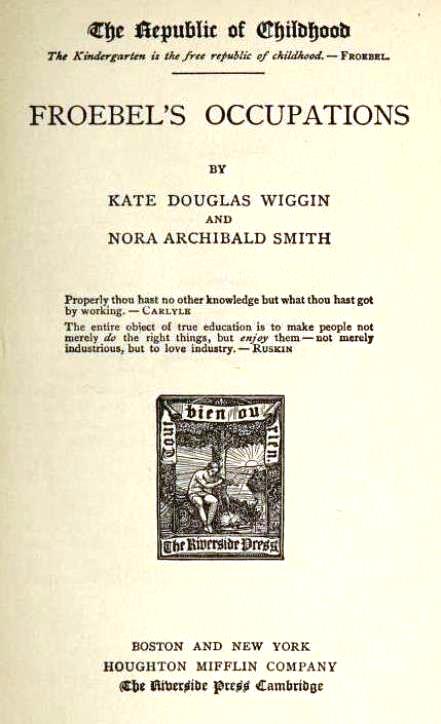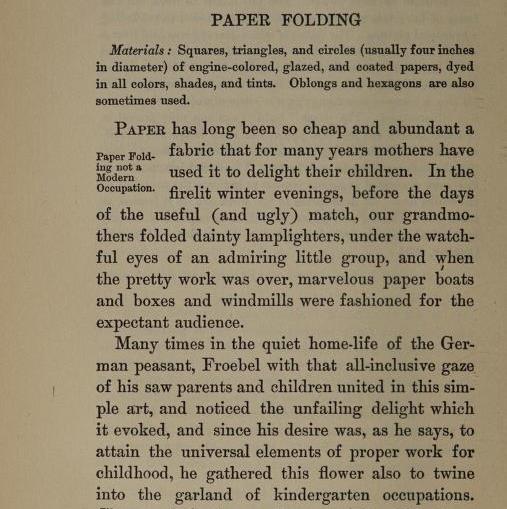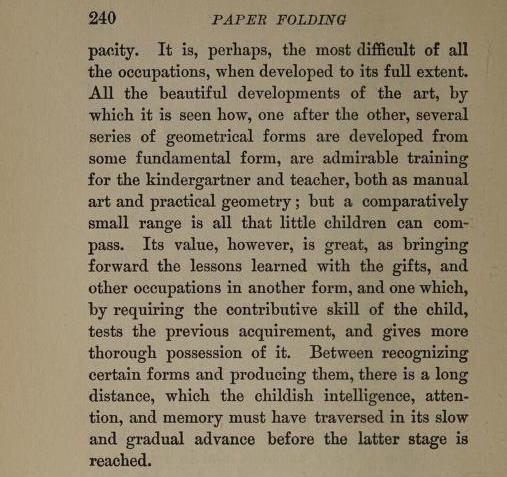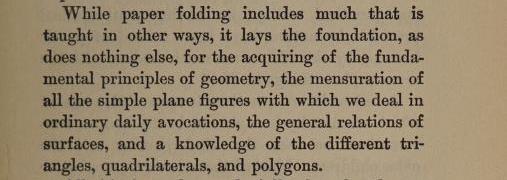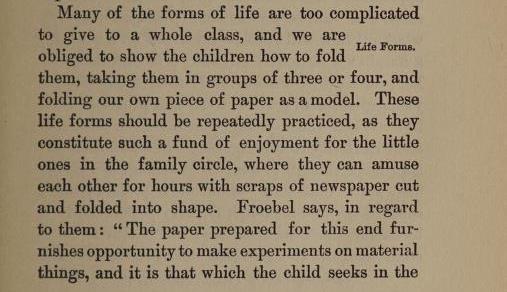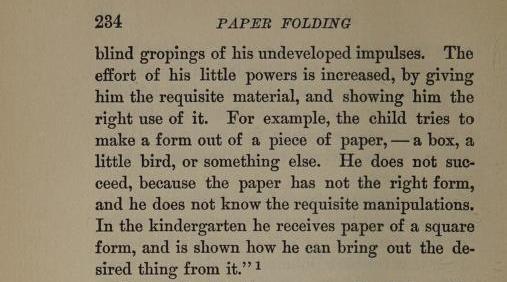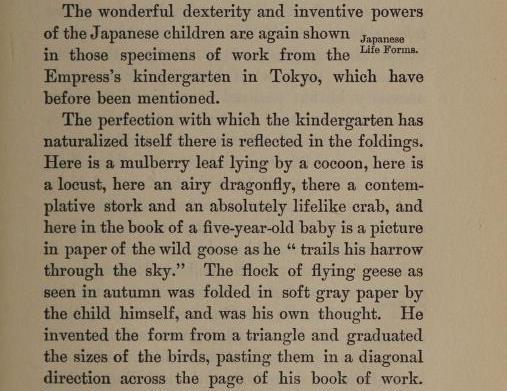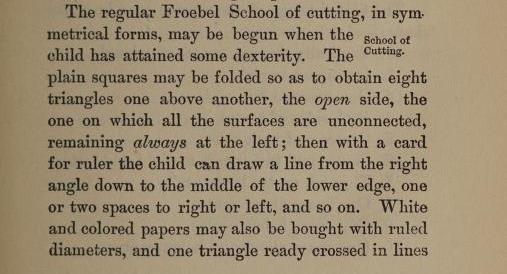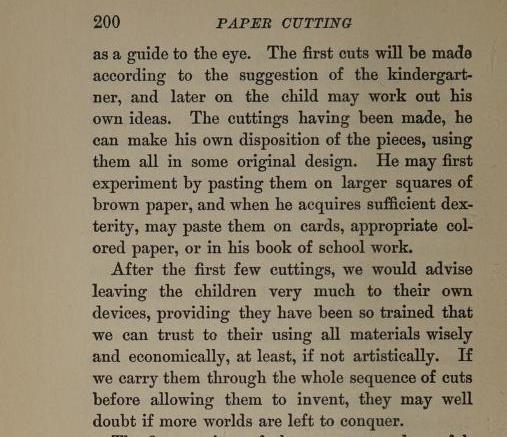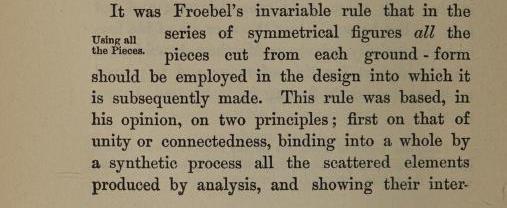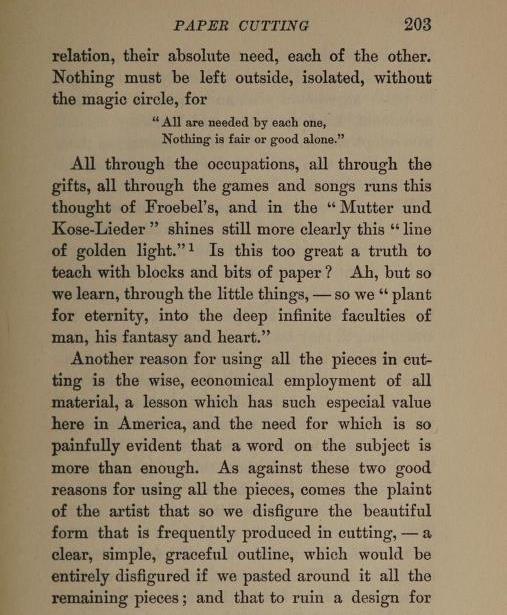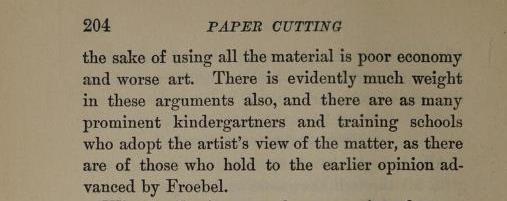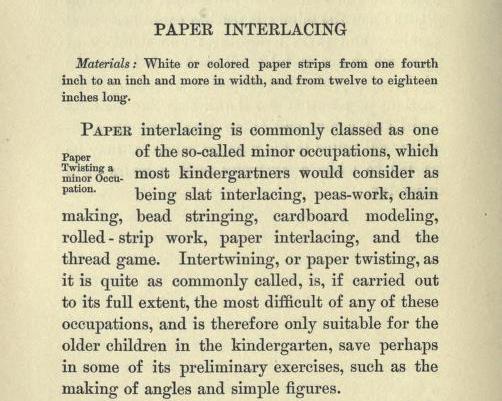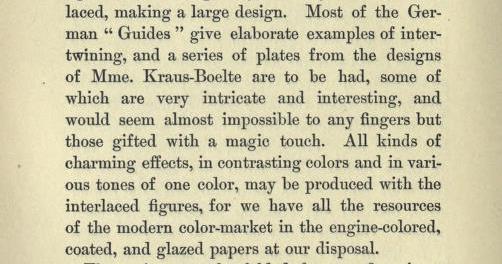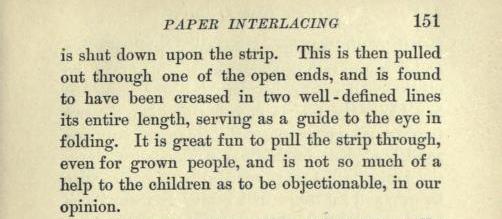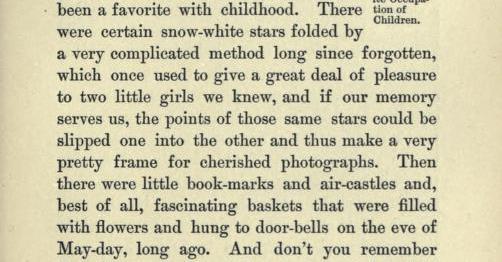| The Public Paperfolding History Project
Last updated 27/4/2024 x |
|||||||
| The Republic of Childhood by Kate Douglas Wiggin and Nora Archibald Smith, 1895/6 | |||||||
| 'The
Republic of Childhood' by Kate Douglas Wiggin and Nora
Archibald Smith was published in three parts by Houghton,
Mifflin and Company, of Boston and New York in 1895 and
1896. Part 1 - 'Froebel's Gifts' was published in 1895. It contains just two mentions of paperfolding, both references to 'circular paper-folding' (ie to folding with circular paper). Part 2 - 'Froebel's Occupations' was published in 1896. Inter alia it contains chapters about 'Paper Interlacing', 'Paper Cutting' and 'Paper Folding'. There are no illustrations. The work relies on written descriptions. Part 3 - 'Kindergarten Principle and Practice' was also published in 1896. It makes no mention of paperfolding. Part 1 of the work is available online here. Part 2 of the work is available online here. **********
********** Analysis All three chapters are well worth reading in full. Paper Folding This chapter describes how to teach using simple Folds of Life, and contains a basic, but quite unclear, description of the folding of Folds of Beauty (although the term is not used). Some general remarks on the origin of the occupation and its difficulty. There is reference to the folding of Paper Spills, boxes, boats and windmills.
and
********** A list of Folds of Life from simple to complex, including the Table and the Salt-Cellar - ending with praise for The Pig I cannot identify with certainty the horse-car, the small tent, the card-case, the fireplace, the box or the wood basket. The two canoes must be the Double Boat
********** Paper folding as a foundation for geometry
********** Froebel on Folds of Life - quoted from 'Reminiscences of Froebel' by La Baronne de Marenholz
********** Description of Folds of Life from Japan
********** Paper Cutting Most of this chapter is devoted to discussing free-cutting. There is also some reference to folding to allow the free-cutting of symmetrical forms and to the Froebelian occupation of Ausschneiden und Aufkleben, and in particular to whether the cut off pieces should be subsequently added to the design when it is mounted. Some general observations on Ausschneiden und Aufkleben
********** A discussion about the use of cut off pieces
********** A note about cardboard modelling
********** Paper Interlacing This chapter is a clear exposition of the Froebelian occupation of Verschnuren as understood in the USA at the end of the 19th Century and is worth reading in full. Here are some interesting extracts: Some general observations on the usefulness of the 'paper twisting' occupation (ie Verschuren)
********** This passage describes a simple paper folding machine
********** This passage seems to me to be a description of Paper Rosettes
********** This passage describes Witch's Ladders
********** |
|||||||
